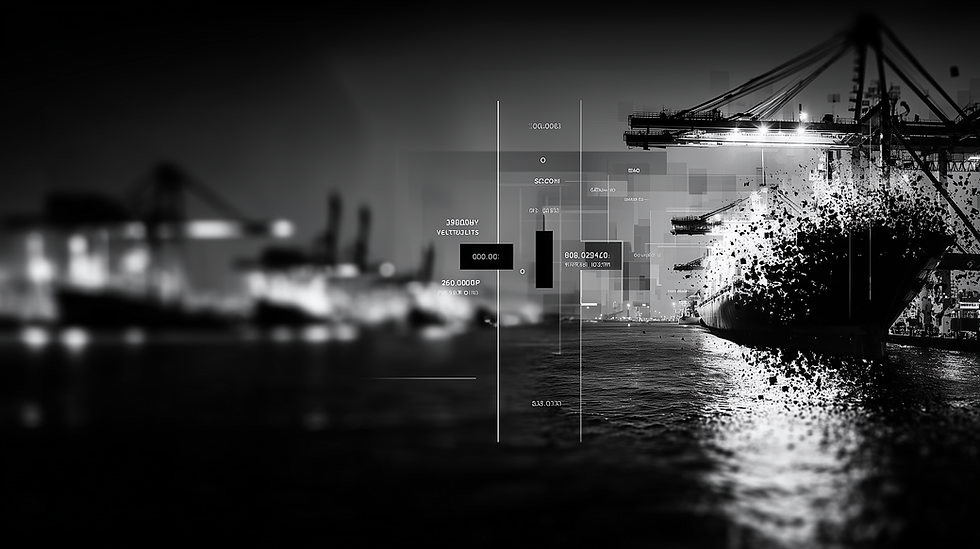HOW TO BALANCE COST VS RESILIENCE IN SUPPLIER SELECTION
- Strategic Vector Editorial Team

- Jan 27
- 3 min read
Updated: Sep 12

A PRACTICAL GUIDE FOR MID-CAP U.S. SUPPLY CHAIN EXECUTIVES
Balancing cost efficiency with resilience is no longer a theoretical debate for procurement leaders. The events of 2024 proved that the cheapest supplier is not always the smartest choice. As companies finalize their 2025 supplier strategies this month, the lessons from last year’s disruptions are driving a shift from pure cost optimization toward resilience-weighted sourcing decisions.
Global supply chains have been rattled by prolonged Red Sea shipping disruptions, oil price volatility, and sharp currency swings in key emerging markets. Mid-cap U.S. companies, particularly in manufacturing, industrials, and energy, are feeling the effects in freight costs, inventory planning, and capital allocation. These conditions are likely to persist into 2025, making supplier resilience a competitive differentiator.
These steps frame the real trade-offs in cost vs resilience in supplier selection, giving procurement leaders a structured way to balance efficiency with long-term stability. While each step is actionable, implementing them effectively requires access to sector-specific risk intelligence and cross-functional alignment.
STEP 1 — DEFINE RISK TOLERANCE
Begin by establishing your organization’s acceptable level of supply chain risk. This involves aligning leadership, finance, and operations on how much potential disruption the business can absorb before operations or margins are materially impacted. Risk tolerance should account for sector volatility, working capital flexibility, and strategic growth plans.
STEP 2 — CATEGORIZE SUPPLIERS BY BUSINESS CRITICALITY
Not all suppliers deserve equal attention. Classify each supplier by business impact:
Critical: Operations stop without them
Important: Delays hurt but don’t halt operations
Standard: Easily replaceable with minimal disruption
This tiering determines how much of a resilience premium you should be willing to pay and which suppliers warrant deeper due diligence, alternative sourcing, or stronger contract terms. It also ensures resources are allocated where the operational stakes are highest, critical for mid-cap companies with lean procurement teams.
STEP 3 — CALCULATE TOTAL COST OF OWNERSHIP (TCO) FOR EACH CATEGORY
Price per unit rarely reflects the true cost of a supplier relationship. Incorporate:
Freight and insurance variability from shipping route disruptions
Currency volatility exposure
Compliance costs from regulatory changes in supplier jurisdictions
By calculating TCO for each supplier category, you can identify where higher resilience premiums are justified and where cost efficiency can take priority. For companies with multi-country operations, tracking these variables by geography also helps align procurement with global risk management.
STEP 4 — STRESS TEST CRITICAL SUPPLIERS
Model how each critical supplier would perform under realistic shocks using scenario analysis that accounts for interdependencies between geographic risks, commodity exposures, and regulatory changes—calibration that requires both quantitative modeling and sector-specific risk intelligence. Examples include:
30% freight rate spikes due to maritime route closures
Commodity price surges tied to regional conflicts
Currency devaluation in emerging market sourcing hubs
STEP 5 — BUILD CONTRACT FLEXIBILITY
Flexibility in contracts allows companies to pivot faster when conditions change.
This includes:
Volume flexibility clauses to adjust order quantities without penalty
Multi-year agreements with review points for market condition changes
Contingency sourcing terms to activate backup suppliers if needed
By embedding flexibility into supplier agreements, you create an adaptive supply base that can respond to both short-term shocks and long-term shifts in demand or regulation.
STRATEGIC TAKEAWAY: COST VS RESILIENCE IN SUPPLIER SELECTION
For mid-cap U.S. companies, supplier selection in 2025 is as much about shock absorption as it is about cost control. By expanding evaluation criteria beyond price to include resilience factors, executives can reduce the likelihood of costly supply interruptions and strengthen long-term competitiveness. This approach also positions companies to adapt faster to regulatory changes, geopolitical disruptions, and shifting global demand patterns.
Emergent Line advises executives and boards on supplier risk and resilience strategy, helping companies turn procurement into a driver of operational stability.
→ If you’re unsure whether your supplier mix is optimized for both cost and resilience, explore a strategic assessment discussion to map exposure and next priorities.
IMPORTANT NOTICE
This content is provided for informational purposes only and does not constitute legal, regulatory, compliance, financial, tax, investment, or professional advice of any kind. The information presented reflects general market conditions and regulatory frameworks that are subject to change without notice.
Readers should not rely on this information for business decisions. All strategic, operational, and compliance decisions require consultation with qualified legal, regulatory, compliance, financial, and other professional advisors familiar with your specific circumstances and applicable jurisdictions.
Emergent Line provides general business information and commentary only. We do not provide legal counsel, regulatory compliance services, financial advice, tax advice, or investment recommendations through our content..
This content does not create any advisory, fiduciary, or professional services relationship. Any reliance on this information is solely at your own risk. By accessing this content, you acknowledge that Emergent Line, its affiliates, and contributors bear no responsibility or liability for any decisions, actions, or consequences resulting from use of this information.


